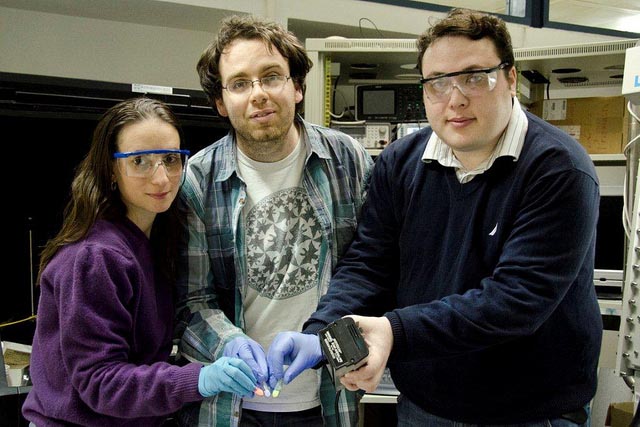Award-winning TAU research uses blood, milk, and mucus proteins to build next generation technology
Silicon, a semi-conducting element, is the basis of most modern technology, including cellular phones and computers. But according to Tel Aviv University researchers, this material is quickly becoming outdated in an industry producing ever-smaller products that are less harmful to the environment.

Researchers have brought together cutting-edge techniques from multiple fields of science to create protein-based transistors from organic materials found in the human body. They could become the basis of a new generation of nano-sized technologies that are both flexible and biodegradable.
Working with blood, milk, and mucus proteins which have the ability to self-assemble into a semi-conducting film, the researchers have already succeeded in taking the first step towards biodegradable display screens, and they aim to use this method to develop entire electronic devices. Their research recently received a silver award at the Materials Research Society Graduate Student Awards in Boston, MA.
Building the best transistor from the bottom up
One of the challenges of using silicon as a semi-conductor is that a transistor must be created with a "top down" approach. Manufacturers start with a sheet of silicon and carve it into the shape that is needed. This method limits the capabilities of transistors when it comes to factors such as size and flexibility.
 |
| Tel Aviv University scientists who created biodegradable transistor (Netta Hendler, Elad Mentovich, and Bogdan Belgorodsky) |
The TAU researchers turned to biology and chemistry for a different approach to building the ideal transistor. When they appled various combinations of blood, milk, and mucus proteins to any base material, the molecules self-assembled to create a semi-conducting film on a nano-scale. In the case of blood protein, for example, the film is approximately four nanometers high. The current technology in use now is 18 nanometers.
Together, the three different kinds of proteins create a complete circuit with electronic and optical capabilities, each bringing something unique to the table. Blood protein has the ability to absorb oxygen which permits the "doping" of semi-conductors with specific chemicals in order to create specific technological properties. Milk proteins, known for their strength in difficult environments, form the fibers which are the building blocks of the transistors, while the mucosal proteins have the ability to keep red, green and, blue fluorescent dyes separate, together creating the white light emission that is necessary for advanced optics.
Overall, the natural abilities of each protein give the researchers "unique control" over the resulting organic transistor, allowing adjustments for conductivity, memory storage, and fluorescence among other characteristics.
A new era of technology
According to the researches, technology is now shifting from a silicon era to a carbon era and this new type of transistor could play a big role. Transistors built from these proteins will be ideal for smaller, flexible devices that are made out of plastic rather than silicon, which exists in wafer form that would shatter like glass if bent. The breakthrough could lead to a new range of flexible technologies, such as screens, cell phones and tablets, biosensors, and microprocessor chips.
Just as significant, because the researchers are using natural proteins to build their transistor, the products they create will be biodegradable. It's a far more environmentally friendly technology that addresses the growing problem of electronic waste.
